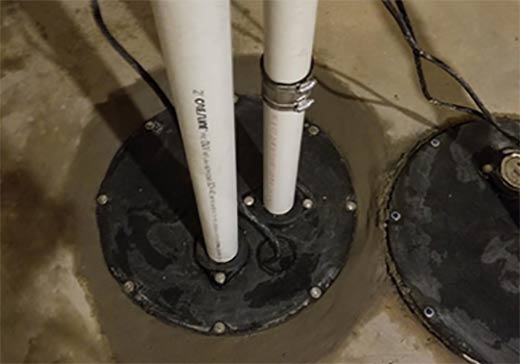
If your bathroom, laundry room, or any of the plumbing fixtures in your home is located below the level of your main sewer line, you need a sewage ejector pump to make sure your home’s plumbing system works properly. Your home’s drainpipes rely on the power of gravity to move wastewater from your house to the city’s sewer system, explains Keyrenter Jacksonville.
But when the plumbing fixtures are at a level lower than the main sewer lines, you have to use artificial means to raise the wastewater from your house to the level of the main sewer lines in the street. This is what a sewage ejector pump does. It elevates wastewater to the level of the main sewer lines or septic field, so it can flow freely.
If the home’s plumbing fixtures are at a higher level than the main sewer lines, a sewage ejector pump is not needed. But where the basement, bathroom, or laundry room is below the level of the main sewer lines, a sewage ejector pump is essential. If you have a sewage ejector pump in your home or you are planning to install one, you need to know how this system works.
How sewage ejector pumps work
The sewage ejector pump is a submersible pump installed at the lowest point of a sewage basin. It is connected to a floating switch which automatically turns it on and off, as needed. This pump is a centrifugal pump; the motor rotates an impeller which creates enough pressure to suck water up into the impeller and pump it out into the sewer lines outside your home.
The components of the sewage ejector pump system include:
- A sump basin that is cut into the ground – below grade – and is typically able to hold up 30 gallons of wastewater (for an average-sized home).
- Drain lines from the various fixtures in the home enter the sump basin at a sloping angle for easy flow of water.
- An inlet pipe, 2-4” in diameter connects to the 3-6” main sewer line.
- A check valve before the point where the pipe connects to the main sewer line. This helps to prevent the backflow of wastewater into the sump basin.
- A movable float rises and falls with the level of water inside the basin. This movable switch or float controls the operation of the pump.
- A seal on the top of the sump basin to ensure that wastewater and foul odors do not escape from the top of the basin.
- A vent that exits from the sump pump to connect to a nearby vent stack or runs all the way up to the roof. The vent conveys foul gases from the basin and releases them outside the home where they won’t cause any problems.
How does a sewage ejector pump work?
- Wastewater collects inside the basin from the various drain lines in the home which are connected to the sump basin. This continues until the water reaches a predefined level.
- At that predefined level, the float switch starts the pump. Wastewater is then pumped out of the basin to the level of the sewer or septic line within the property or on the street.
- After the basin is emptied to a certain level, the float turns the pump off. The sewage ejector pump works intermittently; only when the water in the basin is at a specific level.
Sewage ejector pumps are common in locations where the lay of the land makes it necessary to have parts of the home below the level of the home’s main sewer lines. They are also common in rural areas where septic drain fields are a familiar feature in homes. In order for sewage ejector pumps to work, they need to be installed and maintained properly.
Sewage ejector pump installation
The main things to consider before you install a sewage ejector pump in your home are:
- The installation requirements for the system – These are permits required by the municipality, as well as the specific plumbing and building codes to follow.
- The right ejector pump size for your home – Pumps typically come with ½ – ¾ HP and 30–40-gallon capacity. Installing a pump that is too small will cause problems down the road.
- Your installer is an important part of what determines the efficiency of the system. The cost of fixing damage caused by sewage ejector pump failure is too high to leave the job to an amateur.
- The price of the pump – A good quality pump is an investment in your own peace of mind and the safety of your property. Sewage ejector pumps cost between $400 and $1,000.
Finally, after your sewage ejector pump is installed, you will need to maintain the system to get the most out of it. If you hired a professional plumber to install your sewage ejector pump, this should not be a problem. Your installer should be able to educate you on the basic steps for maintaining the system.
